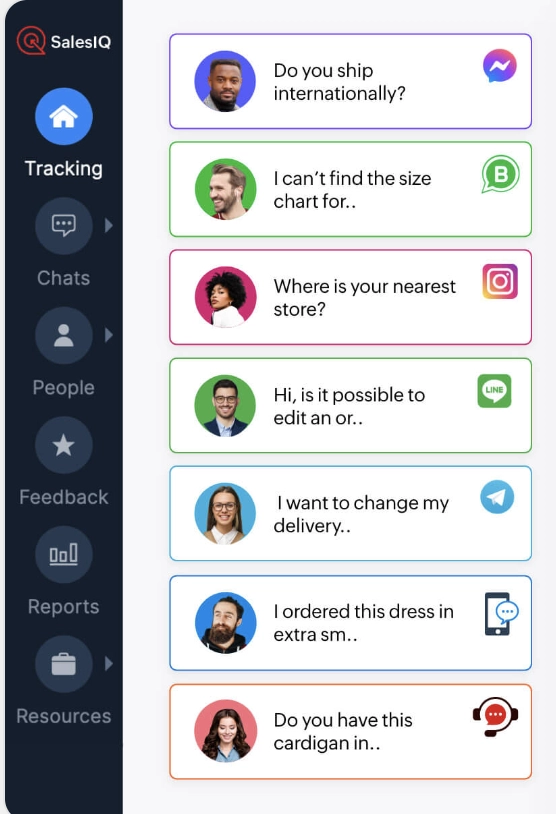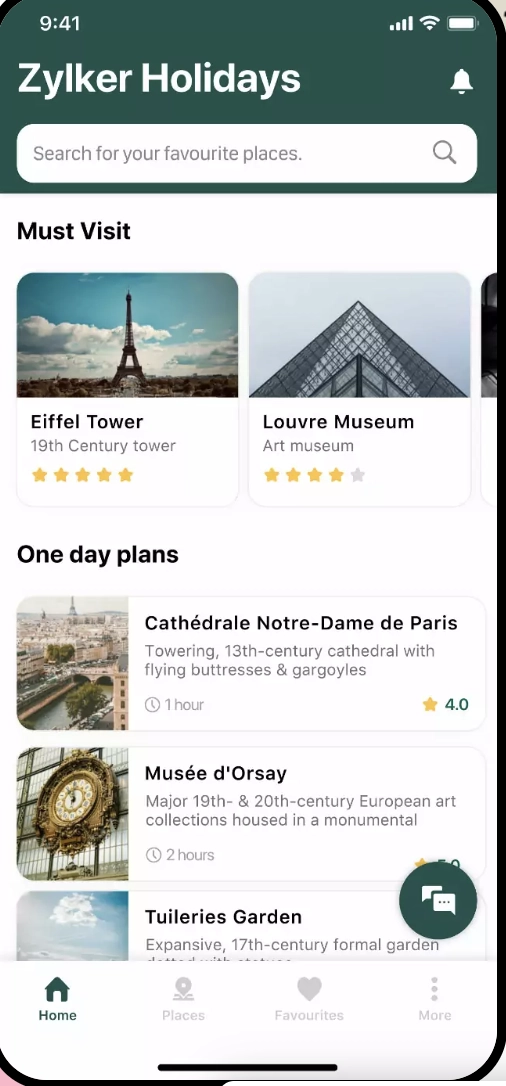The goal of conversational commerce, a cutting-edge marketing and sales strategy, is to increase sales by boosting customer experience through interacting with them on messaging platforms.
Conversational AI solutions such as sales chatbots and virtual assistants are used by conversational commerce enterprises to offer 24/7 client service and engagement.
By offering 10 conversational commerce use cases from 3 different industries we aim to offer advice to executives on how to restructure their marketing and sales strategies.
E-commerce & retail applications
Retail 3.0 will be characterized by Conversational Commerce, which is an upgraded version of Retail 2.0 that was marked by the expansion of e-commerce, which lacked the personal touch.
In this regard, most of the conversational commerce use cases are enhanced versions of Retail 2.0 use cases.
1. Product introduction
Information on a product’s features is a key factor in persuading customers to buy it, especially for expensive items such as electronics and other expensive items. In the era of digitization, people look for quick and easy ways to learn about products.
Conversational commerce businesses utilize AI-driven chatbots like SalesIQ to introduce their products to customers directly rather than having them look for information about the products on e-commerce platforms or Google (Figure 1)
As a result, people do not have to spend time researching a product, but can instead skip onto making a purchasing decision.

Source: Zoho SalesIQ
2. Personal recommendations
Personalization is an important issue for businesses regarding commerce:
- 71% of B2C leaders say personalization has a significant effect on their brands’ strategies
- 58% of companies plan to improve spending on personalization1
The core of conversational commerce is giving customers a sales experience that seems like it is happening in the traditional environment, where the salespeople interpret consumers’ needs and recommend products based on the provided customer information.
Same rule applies for conversational commerce. AI chatbots understand user intent. Thus, it can recommend products that meet potential customers needs.
3. Convenient transactions
Cart abandonment rate is around 70%.2 Thus, retail companies miss lots of sales opportunities. Conversational commerce aims to decrease cart abandonment rate in two ways:
- Direct customers to checkout: There are times where customers are confused, or are too “lazy” to proceed to checkout. To cope with this problem, chatbots can guide customers to proceed checkout with one button.
- Notify customers regarding their prepared charts: Nowadays, customers interact with so many e-commerce platforms. Therefore, sometimes people forget the carts they created. Chatbots can remind these individuals regarding those and encourage them to finalize transactions.
4. Delivery & customer support
Conversational commerce can alert clients regarding:
- Shipping timeline
- Shipping status
- Delays etc.
Also, chatbots can answer customers’ frequently asked questions regarding the delivery process. Thus, chatbots can reduce the workload of call centers and augment workers to complete more value added tasks.

Source: Zoho SalesIQ
5. Offline shopping booster
Conversational commerce can be used as a strategy that improves your offline revenue.
B2C consumers claim they research goods online prior to visiting a physical shop thanks to easier navigation capability, and availability status, that their websites offer.
Thanks to conversational commerce, businesses can interact with clients and learn their locations, and what they are looking for. Through these data, the chatbots can then direct the users to the nearest store that is selling their desired item. In this scenario, the chatbot itself does not make the sale, but rather contributes to it.
You can read our article on the Top 10 eCommerce Technologies with Applications & Examples if you want to discover how to compete with eCommerce giants. You can read our article on the Top 10 eCommerce Technologies with Applications & Examples if you want to discover how to compete with eCommerce giants.
Travel & hospitality applications
Customers are willing to pay 14% more for hospitality sector transactions and 10% more for purchasing airway tickets if the customer service is convenient.3 Thus, statistics suggest that travel and hospitality industries can significantly benefit from conversational commerce.
Some e-commerce & retail applications of conversational commerce are also useful for travel and hospitality sectors, such as customer support and product/service introduction. However, conversational commerce also has 2 main sector specific use cases as we introduce in this section.
6. Travel planning
Conversational commerce for travel & hospitality means mimicking offline travel planning experience including travel agents guidance and organization via AI driven chatbots.
Travelers can find reviews and ratings to assist them narrow down their choices. Moreover, the chatbot can offer even higher levels of personalized suggestions by asking them, and learning about, their:
- Personal interests (i.e., do they like golfing? Rock climbing? etc),
- The number of people they are traveling with,
- What purpose they are traveling for,
- Accommodations preferences,
- And other activities they enjoy can all be taken into account when choosing a vacation plan.

7. Visa eligibility checking
For some citizens who want to travel to particular countries, getting a visa is required. Visa rejection, however, is a common occurrence. Visa denial can therefore spoil your clients’ vacation plans, cause monetary damages (i.e. goodbye non-refundable deposits!) and harm customer satisfaction.
Conversational commerce companies use hospitality chatbots to measure visa eligibility of their customers. Additionally, chatbots offer information on the documents that consulates want to review, the upcoming visa appointments, and can generally guide clients through this stressful and confusing procedure.
Financial services applications
Since more than 90% of millennials prefer to use financial organizations that offer digital services and communication capabilities, digital transformation and conversational banking are essential adaption tactics for financial institutions.
Customers must be kept informed about banking and insurance services because they are frequently confusing to the people. The following specific conversational commerce use cases in finance provides organizations a competitive edge:
8. Financial consultancy
To create a portfolio that maximizes customers’ utilities, a typical financial advisor should learn about the customers’ personal information concerning:
- Risk profile and preference,
- Desired financial return,
- The duration of investment,
- Income fluctuation, and other inputs that concern an investment decision.
In the digital realm of FinTech, a wealth management chatbot can fulfill the same role. It can initiate a discussion with a customer, get the information necessary to identify their unique requirements, and then make recommendations for the best financial products.
Additionally, conversational commerce can be utilized to improve your consumers’ financial literacy, which will increase customer loyalty. For instance, the chatbot of Tata Mutual Fund educates users about financial topics so they are more informed about the financial tools they can utilize.
To learn more about banking chatbots, read our Banking Chatbots Guide: Benefits, Applications & Best Practices article.
9. Insurance policy advisor
Similar to financial consultancy, insurance companies can find out customers’ specific needs by adopting conversational commerce. For instance, insurance chatbots can communicate with customers to learn about:
- Customers risk attributes,
- Features and condition of insured product for underwriting and risk assessment,
- Personal details for issuing policy etc.
10. Claims processing management
Customer satisfaction is highly impacted by claims processing. Implementing a fully digital claims processing system is not advantageous for insurance companies, as we discussed in our article, Top 7 Technologies that Improve Insurance Claims Processing, because depending on the tragedy people experience , insureds might need a human touch for claim handling.
However for some cases such as minor traffic accidents, people need a fast solution for their financial loss. In this regard, conversational commerce can be solution, where chatbots supports insureds:
- Submitting first notice of loss (FNOL),
- Updating claim details,
- Tracking claims and so on.
The below video illustrates how chatbots can automate claims processing:
If you are seeking for the best conversational commerce platforms to boost your sales, check out our article Conversational Commerce Platforms: Data-driven Benchmarking.
If you have more questions regarding conversational commerce and its use cases, you can reach us.
External Links
- 1. ”Embrace personalization to maximize growth” Retrieved in November 2024
- 2. ”How To Reduce Cart Abandonment and Close Sales” Retrieved on November, 2024
- 3. Customer experience is everything: PwC .

Comments
Your email address will not be published. All fields are required.